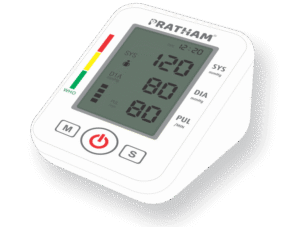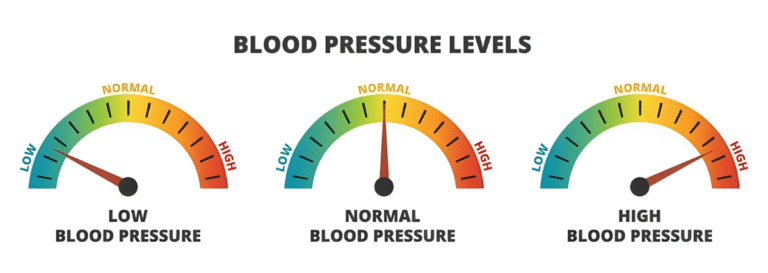BP Problems During Winters: Risks & How to Manage them

Introduction
As winter approaches, the drop in temperatures brings more than just a change in weather. For individuals living with blood pressure-related conditions – whether hypertension or hypotension – the cold months can have a significant impact on cardiovascular health. Several studies have shown that blood pressure increases during winter, making seasonal management important for those at risk.
In this blog, we will explore how and why cold affects blood pressure, the health risks associated with it, and how to proactively monitor with the clinically accurate BP monitor developed by Astam Diagnostics Pvt. Ltd., plays an important role in prevention and control.
Understanding the Winter-Blood Pressure Connection
Why does blood pressure increase in cold weather ?
The body’s natural response to cold temperatures is to conserve heat by constricting (narrowing) the blood vessels. This vasoconstriction increases the resistance within the blood vessels, causing the heart to work harder to pump blood – resulting in increased blood pressure.
This effect may be especially problematic for :
- Individuals with pre-existing hypertension
- Elderly people with weak cardiovascular systems
- Patients with chronic diseases such as diabetes or kidney disease
Conversely, people with hypotension (low blood pressure) may experience worsening symptoms during the winter season due to factors such as reduced blood flow to vital organs, dehydration and reduced physical activity.
The Hidden Risks of Uncontrolled BP in Winter
Increases or decreases in blood pressure may go unnoticed without regular monitoring, especially since symptoms are often silent or mistaken for seasonal fatigue. However, uncontrolled fluctuations can lead to serious complications :
- For hypertensive patients : Increased risk of heart attack, stroke, heart failure, and aneurysm.
- For hypotensive patients : Fainting, risk of falls (especially in the elderly), fatigue and impaired organ function.
Additionally, colds are often associated with sedentary behavior, dietary indulgences (especially high sodium foods), and seasonal stress – all of which can further destabilize blood pressure levels.
Key Symptoms to Watch For
Symptoms of Elevated BP:
- Headaches
- Chest pain or tightness
- Dizziness
- Blurred vision
- Irregular heartbeat
Symptoms of Low BP:
- Light-headedness
- Cold or pale skin
- Nausea
- Extreme fatigue
- Fainting episodes
Best Practices for Managing Blood Pressure in Winters
While the seasonal increase in blood pressure is largely physiological, it can be managed effectively through lifestyle choices and frequent monitoring. Here are the key strategies :
1. Stay Active Indoors
Exercise helps control blood pressure by strengthening the heart and improving circulation. Indoor walking, yoga or resistance training are good alternatives when outdoor activities are limited.
2. Dress Appropriately
Wear warm layers, especially in the morning and evening when temperatures drop. Protecting your extremities (hands, feet, and head) helps prevent excessive vasoconstriction.
3. Maintain a Heart-Healthy Diet
Focus on foods rich in potassium, magnesium and fiber. Reduce sodium intake, and stay hydrated – even if you don’t feel thirsty during the colder months.
4. Manage Stress
Winter blues and seasonal affective disorder (SAD) can lead to increased stress, which can result in increased blood pressure. Breathing exercises, meditation and maintaining a routine can help manage stress levels.
5. Most Importantly: Monitor Your Blood Pressure Regularly
Blood pressure can fluctuate significantly during winter, sometimes without any symptoms. This makes regular home monitoring necessary – especially for patients who are already taking antihypertensive or vasopressor medications.

Astam Diagnostics BP Monitor: Precision You Can Trust, At Home
Astam Diagnostics Pvt. Ltd., we understand the importance of reliable, clinical-grade monitoring – especially when seasonal changes can quietly impact your heart health. That’s why we developed our Digital BP monitor, engineered for accuracy, ease of use, and long-term reliability.
Key Features of Astam Diagnostics BP Monitor :
- ✅ Clinically Accurate Readings : Designed to deliver consistent and accurate blood pressure readings using oscillometric technology.
- ✅ User-Friendly Interface : Easy-to-read LCD display, one-touch operation and memory recall functionality for multiple users
- ✅ Irregular Heartbeat Detection : Advanced features to alert users about irregular rhythms during measurement.
- ✅ Compact and Portable : Ideal for use at home, while traveling, or in professional health care environments.
- ✅ Dual User Memory : Track readings over time for two people, making it ideal for couples or caregivers monitoring multiple patients.
Why Choose Astam Diagnostics’ BP Monitor This Winter?
- Prevention-focused : Enables early detection of dangerous trends before symptoms arise.
- Doctor-recommended : Supports treatment planning with continuous data tracking.
- Cost Effective : Reduces the need for frequent clinic visits by empowering patients with self-monitoring.
With easy daily readings, patients can record and share accurate BP logs with health care providers – helping to fine-tune medication dosages and prevent emergency situations.
Final Thoughts: Don’t Let Winter Compromise Your Heart Health
It may seem like it’s time for winter to end, but your blood pressure needs constant attention – especially in cold conditions. Whether you’re managing hypertension, hypotension, or simply aiming for preventive care, regular monitoring is your first line of defense.
Investing in a reliable and accurate BP monitor is no longer a luxury – it’s a necessity. The Astam Diagnostics BP Monitor is designed to bring hospital-grade accuracy to your home, giving you and your loved ones the confidence to effectively manage blood pressure all year long.
Take control of your health this winter – because prevention starts with awareness, and awareness starts with monitoring.




Follow us on social media for updates : Facebook, Instagram, YouTube, Twitter, LinkedIn.
